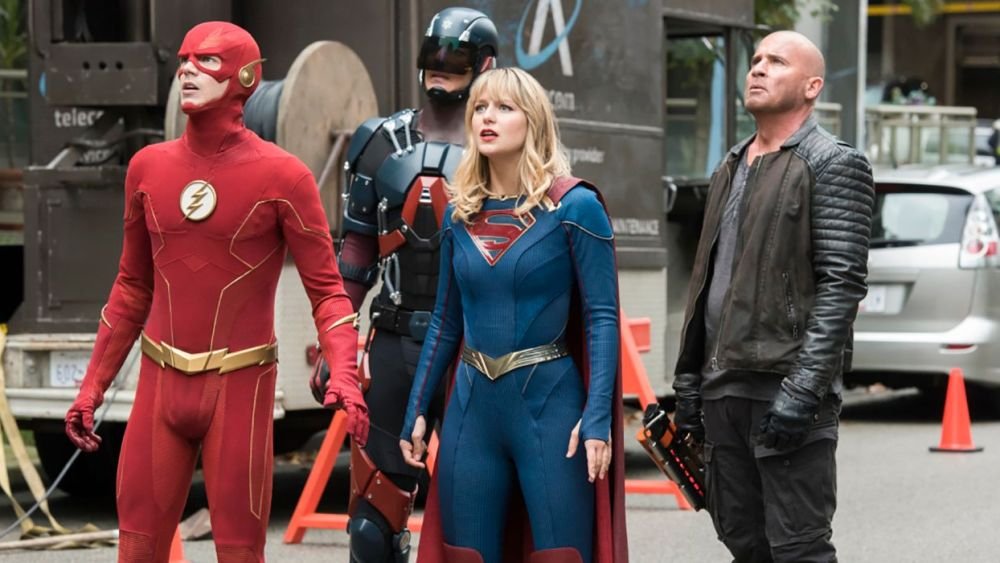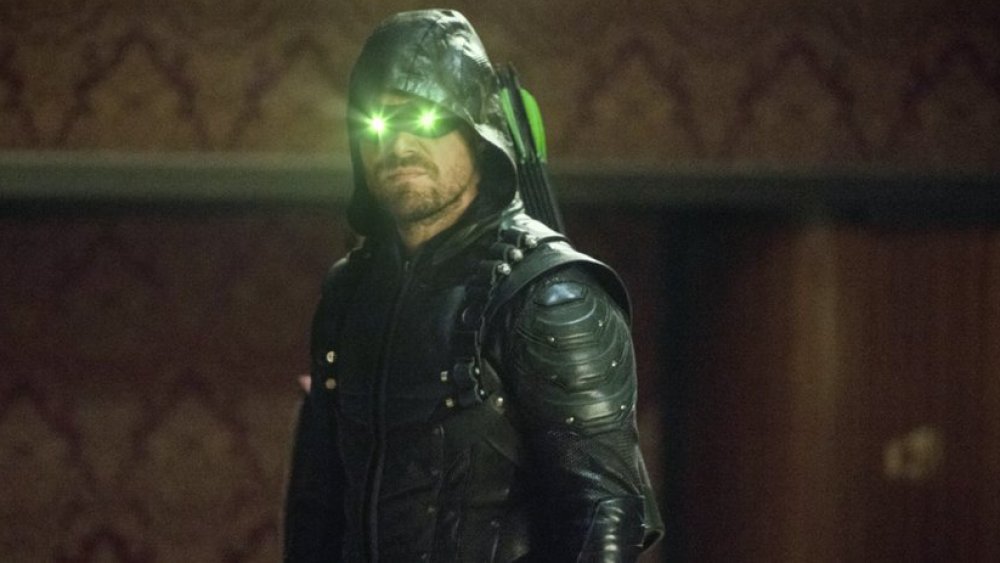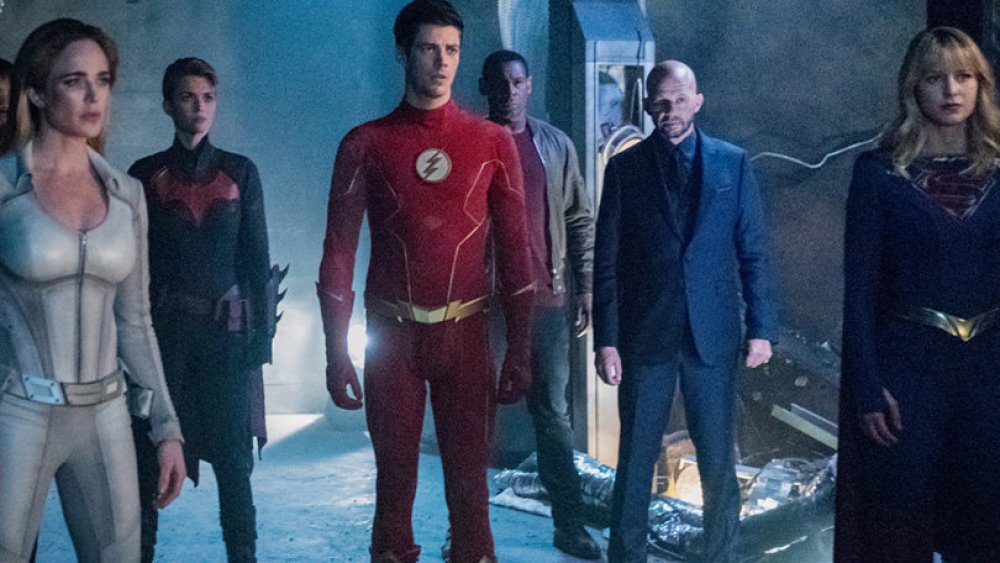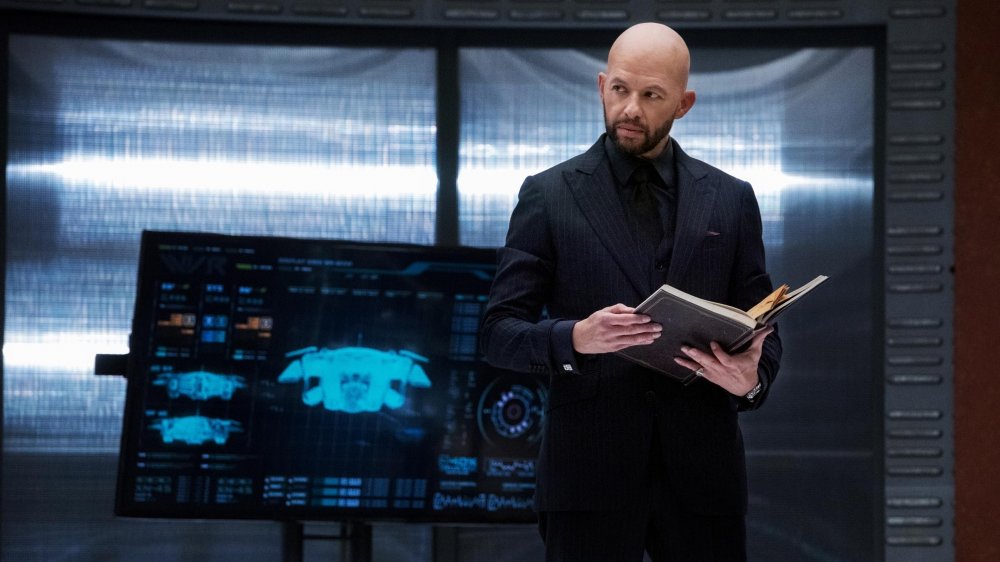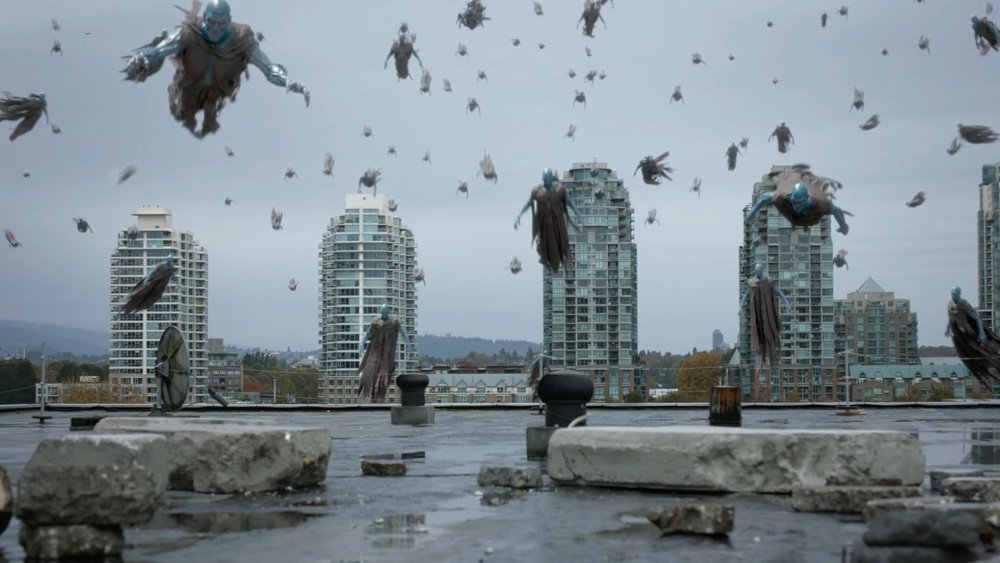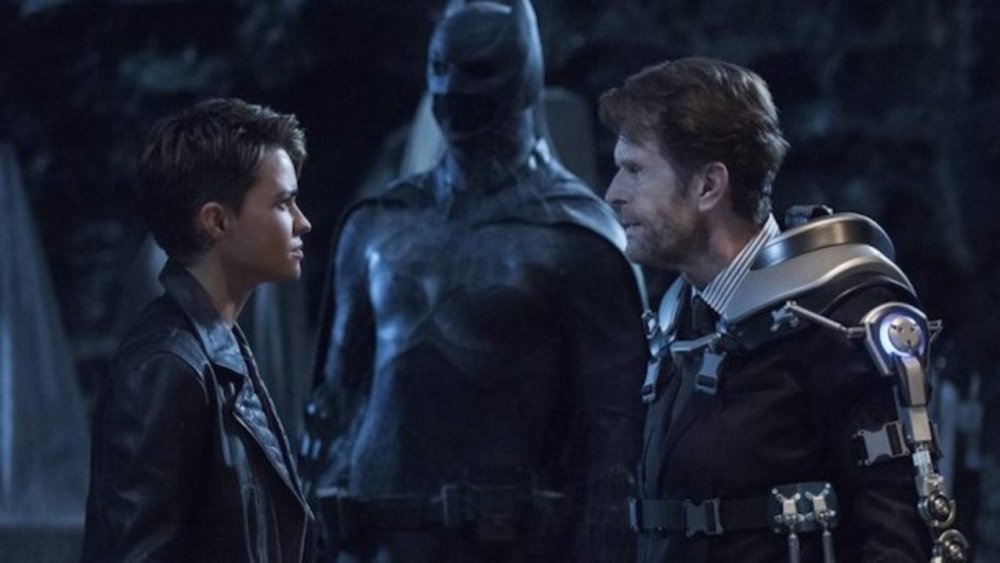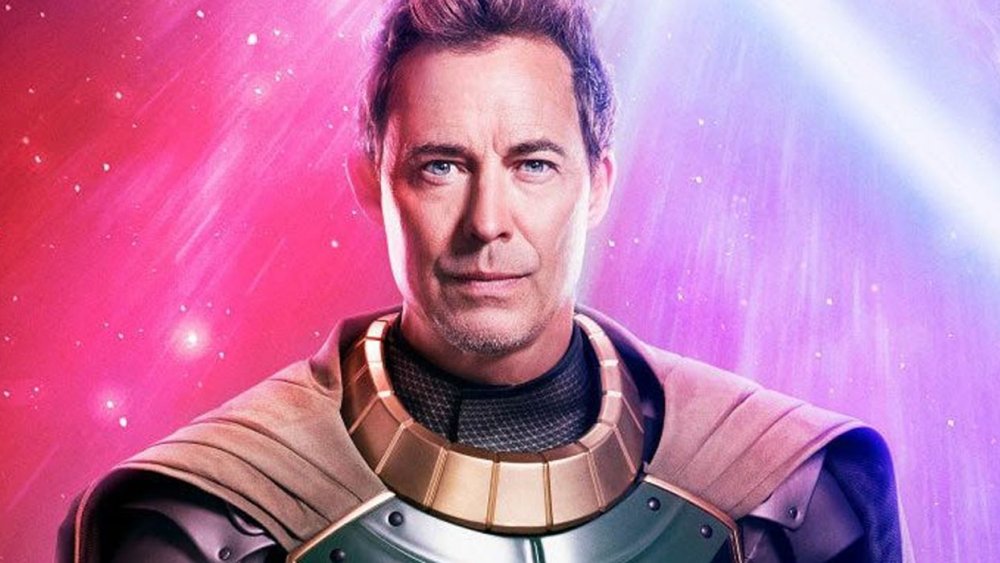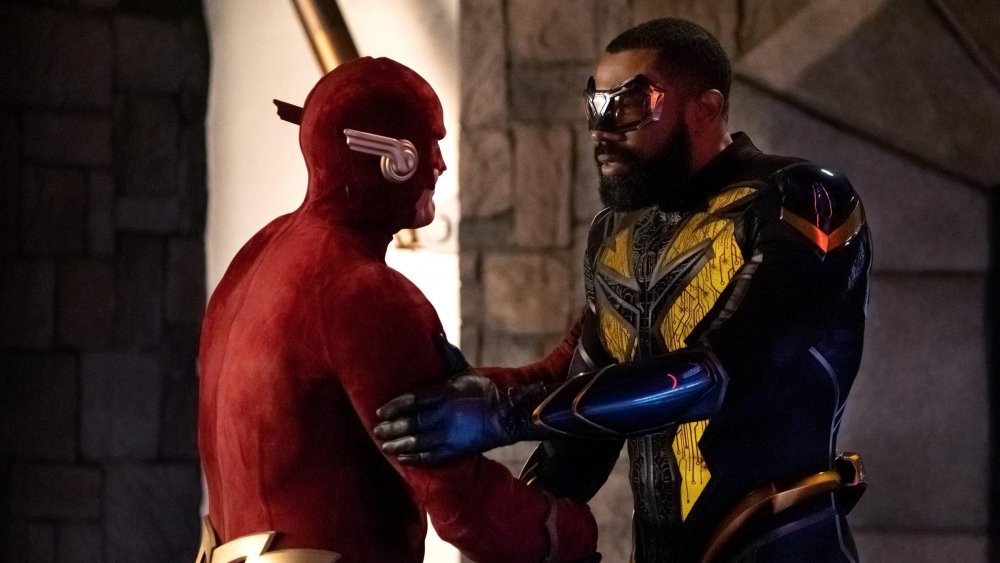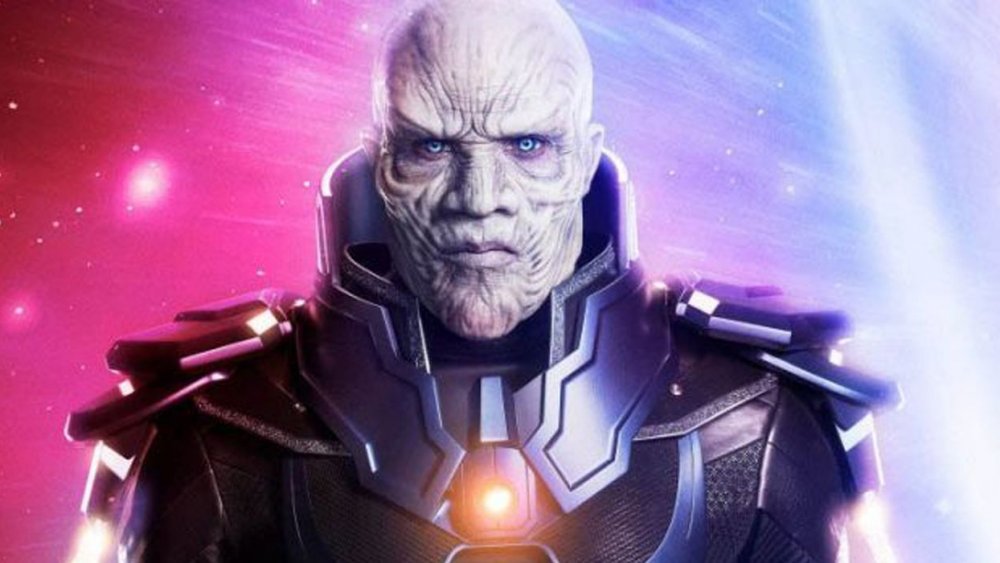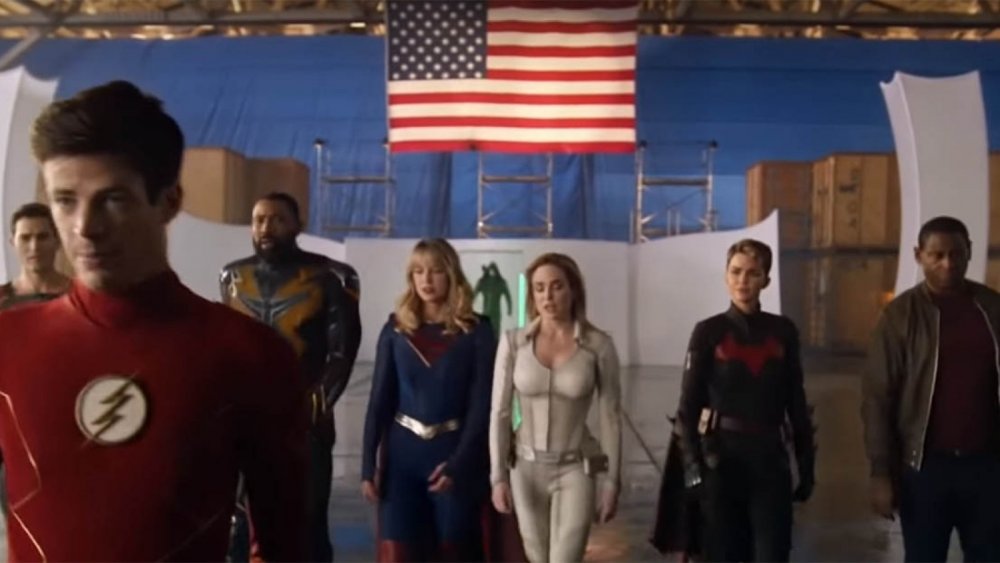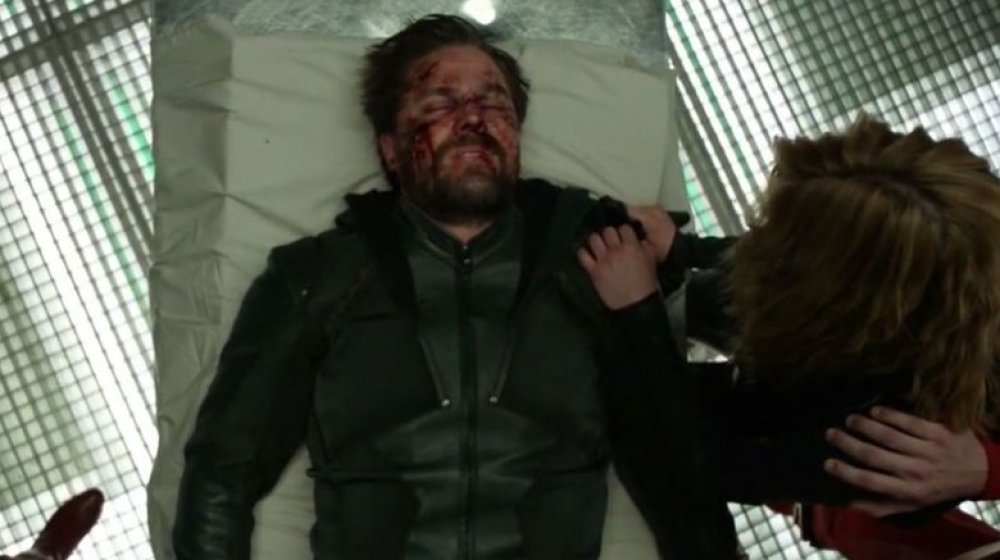Five Best And Five Worst Things In Crisis On Infinite Earths
"Worlds will live, worlds will die" — and the Arrowverse will never be the same. After seven years, multiple crossovers, and an ever-expanding cast of characters, the Arrowverse crossover Crisis On Infinite Earths is over. This crossover was stuffed to the gills with cameos, Easter eggs, and fan service moments. However, it remained true to the spirit of Arrowverse shows by making some of its best moments small ones, focusing on the friendships and love the characters have for each other.
Outstanding performances by Stephen Amell (Green Arrow), Caity Lotz (White Canary), and Grant Gustin (Flash) in particular anchored the crossover, as they made the viewer feel their vulnerability, grief, and hope. Oliver Queen may be dead, but Crisis served as a love letter to the character and the show. The dark nature of Oliver's character always made him an unusual choice as the face of this particular iteration of the DC Universe, but his path to redemption, unshakable faith in his friends, and sheer passion resulted in a man who was easy to love. Oliver's heroism and his friends' reactions to it ultimately made the crossover a rip-roaring success, but there were plenty of awkward and inexplicable moments as well. Let's take a look at the five best and worst moments in Crisis On Infinite Earths.
Best: Oliver Queen as the Spectre
Turning Oliver Queen into the Spectre, the universe's agent of justice and vengeance, was a stroke of genius that many viewers never saw coming. The Spectre was a key character in the original comics series, and episode four of Crisis On Infinite Earths had a conclusion similar to the comic. Oliver channeled the energy of his friends, the Paragons, in order to defeat the Anti-Monitor and restart the Big Bang. All of that was less interesting than the smaller, character-driven moments that Spectre-Oliver spent with his friends in that episode, as he guided them through his memories in order for them to survive various plot contrivances. The heart of the Arrowverse has always been Oliver Queen and Barry Allen's unlikely friendship, as Oliver drew inspiration from Barry's love and Barry drew strength from Oliver's resolve. The show gave them the closure they needed and deserved. The strength of the Arrowverse shows has always been their willingness to lean into the corny, silly, but ultimately bright and sincere aspects of the DC Universe. You just knew that Oliver-Spectre was going to shout "YOU HAVE FAILED THIS UNIVERSE!" at the Anti-Monitor before resetting the universe. It was cheesy and silly, but that's what made it so great.
Worst: Losing the Plot(s)
In the course of the Arrowverse, when crossovers get bigger, the story starts to make less sense. This is too bad, because the Elseworlds crossover that set up Crisis On Infinite Earths introduced a lot of crazy ideas but kept them contained in a fairly tight plot. In episode one of Crisis, the Monitor tells the heroes that the last stand will be on Supergirl's Earth-38. That gets changed to Earth-1, as he suddenly tells everyone to find the Paragons who would help defeat the Anti-Monitor — who then shows up to destroy everything, at which point it becomes all about defeating the Anti-Monitor at the beginning of time. There's a long digression during which they try to prevent the Monitor from ever traveling through time; finally, the Anti-Monitor's first defeat doesn't quite stick, so they need to find a new way to deal with him by sending him to the Microverse (copyright issues notwithstanding). It all adds up to a crossover's worth of MacGuffins, as it was rarely clear as to what was going on and why other than a vague sense of the universe coming to an end.
Best: Everything's coming up Luthor!
With a meandering plot and a villain who barely appeared on the screen, Crisis On Infinite Earths was saved by the scenery-chewing greatness of Jon Cryer as Lex Luthor. It's not just that his Luthor is a smarmy know-it-all with a vicious streak that's a delight to watch. This Luthor is a plot-generating machine. Every second he's onscreen, he's coming up with schemes to take advantage of the Crisis and punish his enemies Superman and Supergirl. When the multiverse was in danger, Lex steals the book of destiny in order to kill Superman in every reality, leading to some of the best cameos in the crossover, like Lex confronting the grown-up Clark Kent from Smallville only to find out that he had given up his powers. When going back in time to prevent the Monitor from accidentally releasing the Anti-Monitor, Lex tries to manipulate the Monitor instead, and when the multiverse is rewritten, Lex changes things so he's now a hero. No matter what he did throughout Crisis, Lex had clear motives, a smart plan, and ruthless ambition.
Worst: Lackluster battles
The Arrowverse shows have always been known for excellent action set pieces. The crossovers have featured aliens and alternate versions of characters from a Nazi universe in epic fights with our heroes. What did we get in Crisis On Infinite Earths? A bunch of shadow minions that disappeared on contact. Even non-powered, non-combatant Dr. Ryan Choi was able to beat them up with just his two fists. The final confrontations with the Anti-Monitor felt anti-climactic, as those battles wrapped up quickly and with a minimum of spectacular things to look at onscreen. Now, the Arrowverse shows have always been far more scaled back in terms of action than your average superhero blockbuster, but the sheer lack of interesting things for the heroes to do led to further plot contrivances up until the conclusion. Even Lex Luthor's shenanigans were more of a side plot than the focus of the series. It's enough to make you wish the Anti-Monitor had summoned various supervillains to be his minions, even if only for a scene or two.
Best: The Darkest Knight
One of the pleasures of the crossover is seeing Kate Kane emerge as a significant hero in her own right. Her chemistry with Supergirl was always obvious, and it's funny to see Batwoman repeatedly punch or wrestle Lex Luthor on Kara's behalf. In a crossover with a few clever swerves, the best comes after traveling to Gotham City on Earth-99 in episode two in order to find one of the Paragons needed to defeat the Anti-Monitor. In this case, it's Kevin Conroy (voice of Batman from the '90s animated series) playing Batman as an elderly, physically broken and bitter man. Supergirl and Batwoman are looking for the Paragon of Courage, and for a while, it felt like their role would be helping Batman regain his courage — but this Batman is an even darker version of the character from The Dark Knight Returns, a murderer who'd even killed Superman. The real Paragon of Courage turns out to be Kate Kane herself, who confronts her own demons by defeating this twisted version of her cousin in one of the best scenes of the crossover.
Worst: The pointless Pariah
Tom Cavanagh is usually fun to watch as whatever version of Harrison Wells appears on The Flash. His most recent multiverse incarnation, Nash Wells, seemed to be no exception while he was tracking down the Monitor for his own reasons. Unfortunately, his motivations became increasingly incoherent as he seemed to serve just as the catalyst who freed the Anti-Monitor. That was bad enough, but his later transformation into a cosmic being known as the Pariah was even more confusing. His purpose and powers were maddeningly vague, and he seemed to be little more than an instrument to move the plot along. Even when the world was reset and his memories of his role in all of this were triggered, his character didn't do much more than act as a reminder that they hadn't won just yet. This is a shame, because the Wells character is usually much more interesting and complex than the one-note Nash.
Best: Black Lightning's back!
Introducing the noble, stubborn Jefferson Pierce, a.k.a. Black Lightning, into the Crisis On Infinite Earths narrative as more than just a cameo was another smartly-played plot swerve. Merging his universe with that of the Flash and Supergirl means that all of the Arrowverse shows are now operating in the same reality, opening up the possibility of interesting guest-star appearances and crossovers in the future. Jefferson Pierce is actually similar to Oliver Queen in a lot of ways. He's a veteran superhero who struggled with the burden of balancing his responsibilities with the needs of his family. He's a stubborn loner and often refuses help from friends and family who could provide it. He's been repeatedly humbled when he thought he was infallible. His reactions to the other heroes in the course of the crossover were a highlight. From his easy chemistry with Barry Allen, to being taken aback by seeing two Supermen (who were comic book characters in his reality), to his wondering aloud about the necessity of a base, he was a delight, and in the end, he took his rightful place as part of the Justice League.
Worst: The Anti-Monitor was an anti-character
Here's the most glaring, most unforgivable flaw of the entire Crisis On Infinite Earths crossover: The Anti-Monitor showed no agency or motivations for his actions other than antimatter and matter being unable to co-exist in the same place. What little dialogue he had was mostly the usual sort of blustery threats from your average megalomaniacal super-villain. For someone touted as an evil force surpassing anything the heroes had ever encountered, his main evil seemed to be sheer boredom. His shadow minions were about as effective and terrifying as paper ghosts. Worst of all, he just seemed kind of dumb. He seemed so certain of his victory that he didn't seem to have any real plans or schemes that the heroes had to deal with, nor did he care to stop the heroes from doing what they were doing. They could have played this up to reflect him being omnipotent to the point of being bored or distracted, but this Anti-Monitor was more of an ineffective old man yelling at a cloud.
Best: Meet the Super Friends!
Everything about the final scenes of episode five was note-perfect. Beginning with Barry Allen and Sara Lance eulogizing their friend Oliver Queen and setting up an eternal flame for him to the old Super Friends theme playing over the final reveal of the Hall of Justice, the show leaned heavily on DC Universe mythology and nostalgia. With Oliver gone, it's only right that Barry should be the new catalyst for the heroes, and it's fitting that for the hero designated as the Paragon of Love, his idea was a big clubhouse where his friends could hang out. The sheer look of glee on the actors' faces when they sat at the round table of this new Justice League was palpable, and it opens up a multitude of storytelling possibilities. For Batwoman and Black Lightning, this cements their place in the Arrowverse. All this and Gleek, too!
Worst: Collateral damage?
The only character who died in the crossover was Oliver Queen, and it took him a couple of tries before he finally perished. The Arrowverse has never been shy about killing characters, so it may seem odd that in an event as big as this there would be so few permanent casualties, although it's easy to understand this decision from a storytelling perspective — the writers clearly wanted to keep as many characters around as possible for the revised realities of their TV shows. Thematically, it was also clear that they wanted to honor the Green Arrow and actor Stephen Amell, as Arrow is ending. Having too many characters sacrificing themselves would have taken away from the focus on Oliver. That said, it did feel like a cheat that pretty much every significant character wound up just fine in the end, even if their realities were shuffled with a bit. The heroes were supposed to be confronting the end of everything, and the outcome didn't reflect this. Hopefully, future crossovers will be scaled back a bit.
